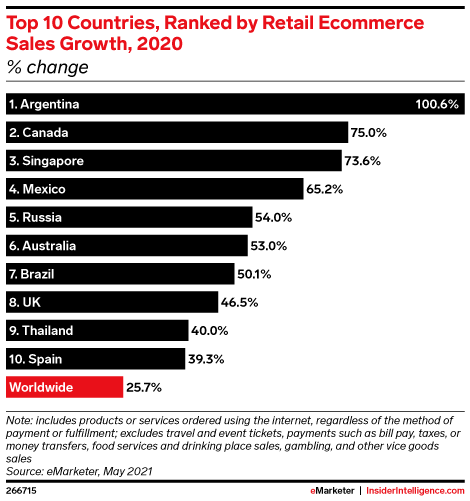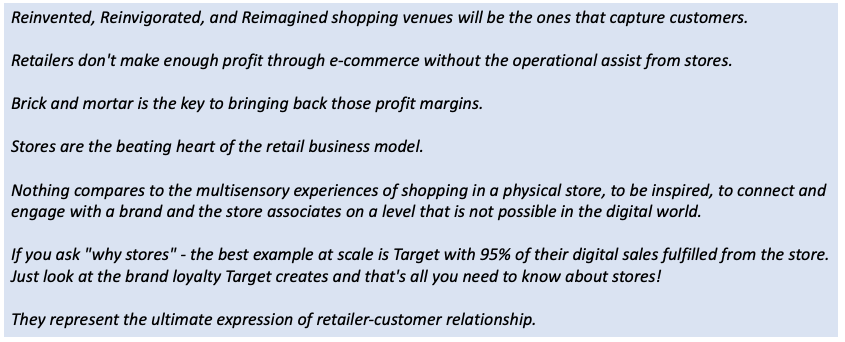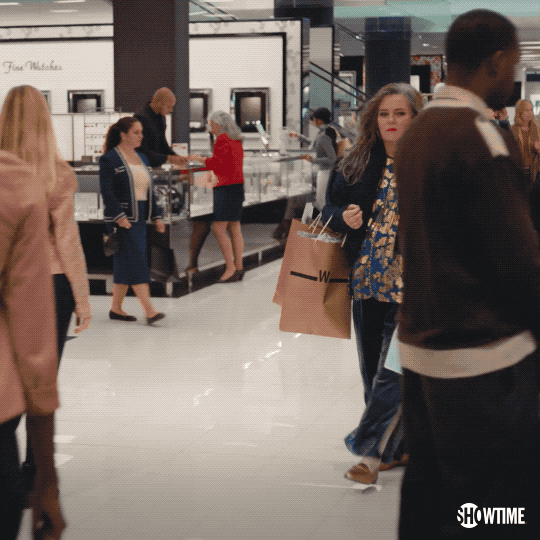Welcome to The Merchant Life, for retailers and retail enthusiasts wanting the insider perspective of all things retail.
Now let’s talk shop.
What is the purpose of the physical store? If we can buy everything we need online, why do retailers really need a brick and mortar space?
Finding the perfect location, hiring the right staff, getting inventory levels right, finding the right store fixtures, enabling visual merchants, and so on.
It’s a lot of work.
So, we pose the question this week?
What is the point of having a physical store?
Put your credit card down, pause on that online purchase and let’s hunt for an answer like we’re treasure hunting at TKMaxx.
Do We Still Need a Physical Store?
If retailers think we are on our way back to pre-pandemic retailing, they are very wrong.
E-commerce sales continue to rise digital shopping is clearly not going anywhere.
In fact, Insider Intelligence showed e-commerce growth skyrocketing well above the global average.
E-com is here to stay. There is no doubt about that.
It will also take a lot more to get a customer into the physical store than ever before.
Online stores are open 24/7 and product comes right to your door.
Your bedroom is your fitting room and you don’t have to worry about anyone judging your clothing choices.
You don’t have to drive to the mall, look for parking, dodge other shoppers, and sift through racks of clothes with COVID-19 protocols still intact.
Such a nightmare.
I spoke to some of my RetailWire BrainTrust friends to get their thoughts on the need for a physical store.
The responses were aligned.
The store gives retailers and brands a space to connect with the customer in a way that digital can’t.
It is the heart of a brand.
And it’s your money maker.
So let’s pause for a minute and shift back to the rise of e-commerce.
Are we saying that if you are a digitally native brand with no physical stores that you won’t make a profit?
Not at all.
In fact, as e-com has surged, customers are still expected to make most of their purchases in-store.
The caveat?
Many purchases are digital driven in-store purchases.
Mike George, president and CEO of Qurate Retail, Inc. told NRF Retail Converge last week, “Even with the surge of e-commerce spending through the pandemic, it’s still true that 80 percent of all purchases will take place in-store post-pandemic.”
Digital native brands are taking the leap offline and there is a reason for it.
The physical store has a purpose.
We spoke to Ron Thurston of Retail Pride and I asked him what does a brick and mortar store need to stay in the game.
“There are some categories that can always be online. We learned that during the pandemic. We all learned how to buy things online. But we need to think about how we support local and it’s by spending money in your local community, not on Amazon.”
Ron makes a great point.
According to NRF, 1 in 4 Americans jobs are supported by retail, directly employing 32 million Americans, making it the largest private sector-employer in the economy.
“It’s always about the people. The future is human connection. We are hungry for it and it’s here to stay. Marketing, new design concepts…all can drive traffic to store but what happens when they get to the store.
All the money you spent on build out and producing more inventory could easily fall apart if the person who is in store is behind the counter staring at their phone.
The store experience will come down to the sales teams representing the brand.
Stores are then a crucial piece in the retail puzzle.
And we need great people in the stores.
Let’s look at 🍎 as an example.
The Apple Church, I mean store 🙄, has a deep of understanding of the Apple customer and how they like to shop.
The teams are customer obsessed and they build deeper relationships with their customers through their ‘church-like’ stores.
And building a relationship with the customer gives the customer the best experience possible.
It is in everything Apple does and across all teams.
As far as Apple is concerned, working in silos is non-existent.
…and in a perfect world they shouldn’t exist.
Here is an example of what traditional retail silos might look like:
Notice how the customer is separated from the channels (stores, e-com) and the functions (strategy, design).
What if we tore down the incumbent structure and instead put the customer at the center of the retail universe.
Thinking of the customer at the center of the retail end-to-end will get teams more involved with each other working towards the same goal:
- Serving the customer with the best product and service.
- Creating and designing product with the customer in mind along every step of the way.
- Collaborating with them.
- Talking to them…invest in them as they invest in you.
This is what I call being customer obsessed.
At all levels and all processes —> the customer must be at the center.
Mall Matters
Let’s talk shop…shopping malls.
Do we need those too?
The malls need to make some changes and Shlomo Chopp, Managing Partner of Case Equity Partners and the creator of the retailOS platform, could be paving the way for CRE.
He says “the shopping mall is dead.”
“Anchor stores no longer exist and taking a building that is not optimized for picking product without the right infrastructure will fail and are failing miserably.”
So what should the mall be?
The shopping center should be the platform and when technology is added to the infrastructure, it will break down the silos of e-commerce and in-store, giving smaller brands a chance to compete.
By addressing the needs of e-commerce and digitally native brands in the shopping center environment, it will help break the barriers for entry.
I also spoke to Rebecca Fitts, the Director of Real Estate at Leap, a platform that develops and operates retail stores for growing brands, on the future of the mall.
This is what she had to say:
“10 year tenants were the standard and for some reason, if a retailer’s business model implodes in year 5 then the landlord is stuck.
Short term leases and pop-ups are here to stay because both the tenant and landlord have a lot more flexibility to test the market.”
Whether they transform into mixed use spaces by adding hotels or residences, warehouses, gyms or community spaces, malls are not going away.
Malls are here to stay.
The Finish Line
The store and the mall need to evolve and live in the present day.
No one can go back to pre-pandemic times because the customer will not go back.
They will continue to shop online, use TikTok and social to research brands, they will buy local and support their communities. They will hold brands to sustainability commitments and ethical work environments.
Break the retail silos.
Be customer obsessed.












